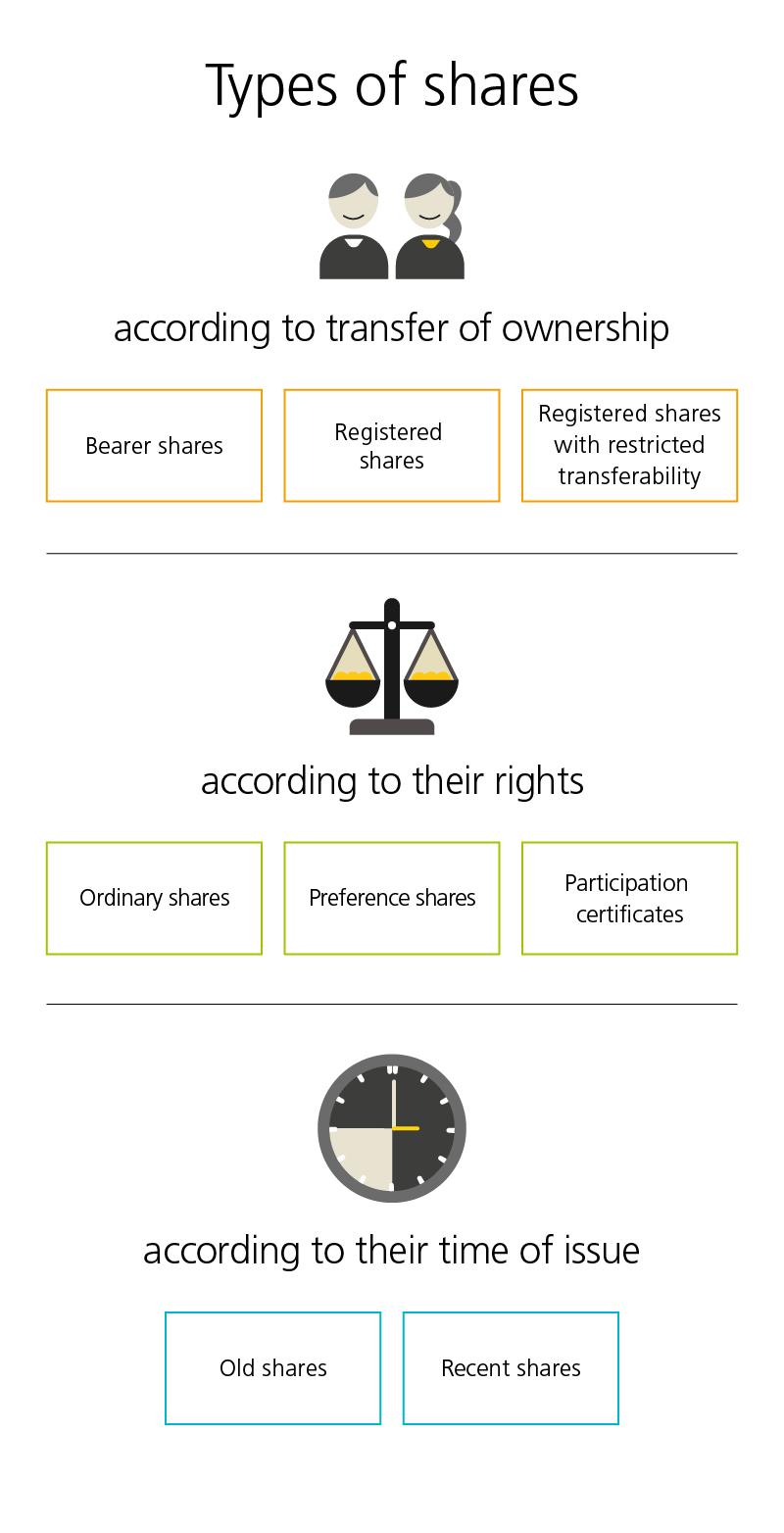At a glance
- There are various types of shares: the main ones include bearer shares, registered shares and registered shares with restricted transferability.
- Shares also confer different rights: ordinary shares carry voting rights, whereas preference shares and participation certificates generally have no voting rights, but may grant special dividend rights.
- Companies decide which types of shares they issue and can offer different types of shares at the same time.
Are you interested in shares and investment options? Subscribe to our investment newsletter to receive valuable insights and news on a regular basis.



